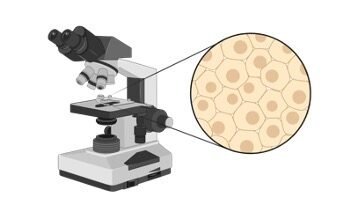Table of Contents
Turgid Definition
Turgid refers to cell states where they are swollen due to uptake of water. Different tissue types or cell types can become turgid. Animal cells may lyse or split if they become too turgid. Other cells that usually exist often in turgid states have an extracellular matrix of fibrous tissue that can help maintain the integrity of the cells as in animals cells.
For instance, Connective tissues like cartilage comprise proteoglycan molecules that consist of sugar and protein mixtures that also link adjacent cells. This extracellular matrix helps them to maintain their integral structure even when facing external pressure and also supports them.
What is Turgid?
Plant cells due to the presence of large vacuoles in their cytoplasm always exist in turgid conditions. Tonoplast the membrane of this organelle aids in actively moving water and other nutrients into the vacuole for storage. This causes the vacuole to swell which causes pressure on the cell walls of the plant. This pressure is referred to as turgor pressure.
When a cell experiences high turgor pressure it is said to be turgid. This pressure is exerted on the cellulose molecules comprising the cell wall. Cellulose are strong fibers that create a cell wall by tightly wounding around each other.
Plants become rigid when turgid tissue walls push against each other. This rigidity in plants helps them to keep their posture and stand up straight. While in the case of animals they only need turgid cells for performing specialized functions. Plants can regulate the movement of leaves and stems by controlling the turgor pressure of those sites.
Such instances include, for absorption of maximum sunlight the turgor pressure may be lowered in some cells to move the particular part towards sunlight. Besides plants, fungi and bacteria also possess cell walls in their structure. In fungi their purpose is similar to plants i.e., to maintain their integrity.
While bacterial cells employ cell walls to prevent lysis or rupturing of their cells in event of excess turgor pressure. They manipulate water potential with the help of turgor pressure and thus regulate the movement of water.
As they are unicellular beings they do not require cell walls to support multi-cellular structures. Turgidity can be observed in animal cells when their surrounding is hypotonic when compared with their cell contents. This indicates that the solute concentration is less in surroundings so following the concentration gradient the water will flow to the cell leading to its intake.
To prevent being turgid the cells would require to pump water out actively. If the cell is not able to remove water more quickly than it enters the cell, then the cell may become too turgid and rupture. But if the plant cells are placed experimentally in a similar situation they will not lyse due to the presence of cell walls.
Turgid Citations
Reduction in turgid water volume in jack pine, white spruce and black spruce in response to drought and paclobutrazol. Tree Physiol . 2000 May;20(10):701-707.
The effect of plant growth regulator treatments on the levels of ethylene emanating from excised turgid and wilted wheat leaves. Planta . 1980 Apr;148(4):381-8.
Differential requirement for NO during ABA-induced stomatal closure in turgid and wilted leaves. Plant Cell Environ . 2009 Jan;32(1):46-57.
Share












